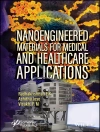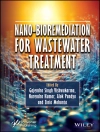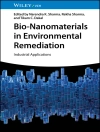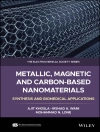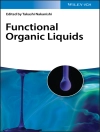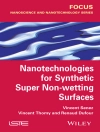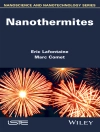This book addresses some essential topics in the science of energy converting devices emphasizing recent aspects of nano-derived materials in the application for the protection of the environment, storage, and energy conversion. The aim, therefore, is to provide the basic background knowledge. The electron transfer process and structure of the electric double layer and the interaction of species with surfaces and the interaction, reinforced by DFT theory for the current and incoming generation of fuel cell scientists to study the interaction of the catalytic centers with their supports. The chief focus of the chapters is on materials based on precious and non-precious centers for the hydrogen electrode, the oxygen electrode, energy storage, and in remediation applications, where the common issue is the rate-determining step in multi-electron charge transfer processes in electrocatalysis. These approaches are used in a large extent in science and technology, so that each chapter demonstrates the connection of electrochemistry, in addition to chemistry, with different areas, namely, surface science, biochemistry, chemical engineering, and chemical physics.
สารบัญ
Preface vii
1 Physics, Chemistry and Surface Properties 1
1.1 Introduction 1
1.2 The Electrochemical Interface 2
1.2.1 Conductivity and Electrical Field: Metal Versus Electrolyte 3
1.2.2 Magnitude of Double Layer Capacitance 6
1.3 Energy in Solids and Liquids: Junction Formation 9
1.4 Surface Reactivity of Low-Index Planes 14
1.5 Electron Charge-Transfer Reactions 18
1.5.1 Hydrogen Electrode vs. Oxygen Electrode 21
1.5.2 Organic-Fuels vs. Oxygen Electrode 22
1.6 The Effect of CN- Surface Coordination on Low-Index Pt Surface: ORR 26
References 29
2 Computational Chemistry for Electro-Catalysis 35
2.1 Introduction 35
2.2 Scope and Limitations of Different Models 39
2.2.1 Clusters 40
2.2.2 Slabs 49
2.2.3 Nanoparticles 59
2.3 Influence of the Support in Electrocatalysis 64
References 69
3 The Hydrogen Electrode Reaction 75
3.1 Introduction 75
3.2 Thermodynamics 77
3.3 Hydrogen Evolution Reaction-HER 78
3.3.1 HER on Platinum Catalytic Center 85
3.3.2 HER on Non-Noble Metal Catalyst Centers 90
3.4 Hydrogen Oxidation Reaction-HOR 100
3.4.1 HOR on Precious Metal Centers 108
3.4.2 HOR on Non-Precious Metal Centers 119
References 124
4 Oxygen Reduction/Evolution Reaction 143
4.1 Introduction 143
4.2 Electrolyzer Thermodynamics 146
4.3 Oxygen Reduction Reaction 148
4.3.1 ORR Pt-Based Nano-Structure Materials 157
4.3.2 Reaction Pathways 159
4.3.3 ORR on Au and Pd-Based Nano-Structure Materials 171
4.4 Oxygen Evolution Reaction 173
References 178
5 Electrochemical Energy Storage 187
5.1 Introduction 187
5.2 Basic Terminology in Batteries 188
5.3 Present Status of Electrochemical Batteries 195
5.3.1 Lead Acid Battery 196
5.3.2 Nickel-Cadmium Battery 197
5.3.3 Nickel-Metal Hydride Battery 198
5.4 Lithium Ion Battery 199
5.4.1 Insertion Electrode Materials 202
5.4.2 Conversion Reaction Electrodes 209
5.4.3 Alloy Electrodes 210
5.5 Post-Li Technologies 210
5.5.1 Na-Ion Batteries 210
5.5.2 Lithium-Sulfur Batteries 212
5.5.3 Metal Air Batteries 215
5.5.3.1 Aqueous Metal Air Batteries 216
5.5.3.2 Non-Aqueous Metal Air Batteries 218
References 220
6 Electrocatalysis and Remediation 225
6.1 Introduction 225
6.2 NOx Reduction 228
6.3 COx Reduction and Methanol Oxidation 240
6.3.1 Methanol Oxidation 246
6.3.2 SOx Reduction 249
6.3.3 Oxidation of Emergent Pollutants 254
6.4 Determination of Nitrate-Based Compounds in DNA 257
References 262
Subject Index 277
เกี่ยวกับผู้แต่ง
Nicolas Alonso-Vante is full professor of chemistry, doing research at the IC2MP laboratory at the University of Poitiers. He holds a Docteur Troisième Cycle, in electrochemistry, and a Doctorat d’Etat in Physical Science from the University of Strasbourg, France. He is the author of over 220 publications, the editor of a two-volume e-book on electrochemistry in Spanish, and holds 6 patents.
Carlos Augusto Campos-Roldán received his Master degree in 2016 under a collaboration between ESIQIE-IPN, Mexico, and the University of Poitiers, France.
Rosa de Guadalupe González Huerta Ph D is a professor at at ESIQIE-IPN, Mexico City. She has co-authored 36 publications, 3 patents and 2 registered trademarks.
Guadalupe Ramos Sánchez is a research fellow at the Chemistry Department of the Universidad Autónoma Metropolitana, Iztapalapa in Mexico City. He has coauthored 37 publications.
Arturo Manzo Robledo is a full professor at ESIQIE-IPN, Mexico City, Mexico. He has authored 35 articles.


